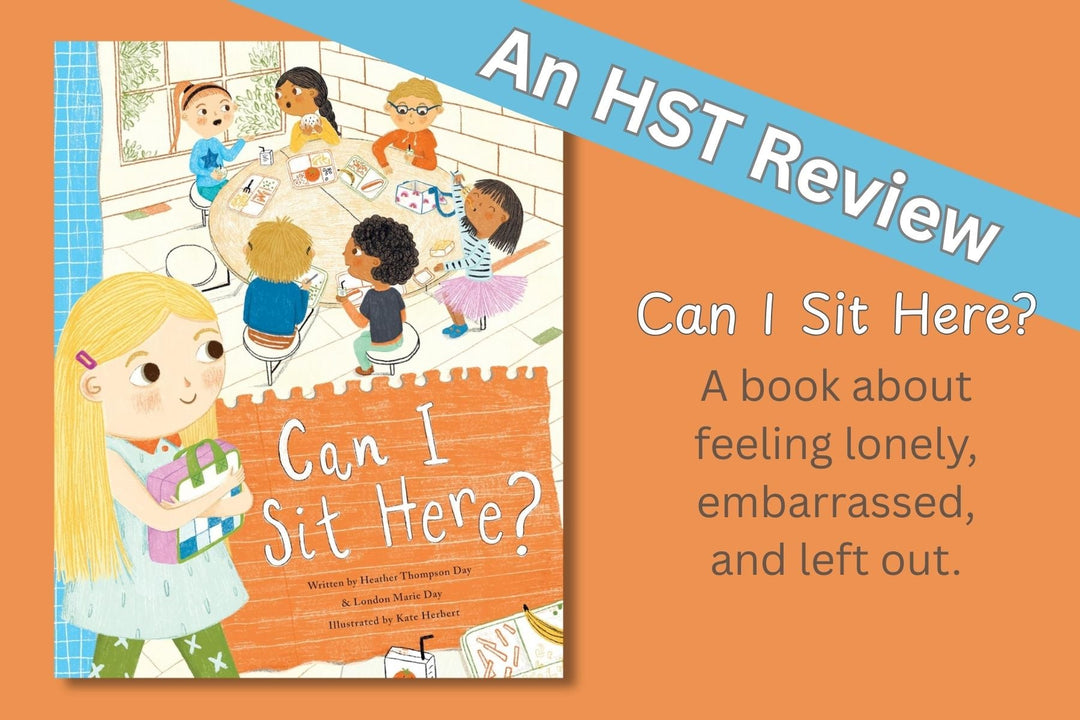Using Role Playing In Your Homeschool

Usually, when we hear the words “hands-on learning”, we immediately fear the mess. Somehow we imagine glitter caked to the table and scraps of construction paper becoming new floor rugs. With little time to spare on in-depth complicated activities, hands-on learning is written off as busy work. Thankfully, not all hands-on activities are monster mess makers. Role playing is a fun way for tactile children to learn without creating unwanted clutter.
During a Sunday school lesson about the paralyzed man and his faithful friends, the Third grade class was learning through hands-on role playing. The curious children were encouraged to grab an edge of the big bed sheet we had brought to church. I instructed the class to carry Mr. Layton around the room. Mr. Layton weighs 180 pounds. The children heaved and pulled their own ways until they started working together to help their “paralyzed friend”. Four years later, my tactile son remembers the physical experience as his favorite Bible lesson in church.
Role playing allows children to create their own costumes and bring situations to life. Little is required but a fun imagination. If you are teaching more than one student, put roles in a hat and allow your children to choose their characters. Be sure to switch roles so everyone can act out the hero’s part.

 Shy, quiet, and introverted students may enjoy and appreciate the chance to express themselves in the comfort and safety of their own living room. Future speakers will love the opportunity to talk freely during these lessons. Budding actors will have the green light to finally over exaggerate. Artistic hands can create unique sets and backgrounds using cardboard boxes and paint. Musicians might create their first score to go along with their act. Why not center all of these wonderful passions and interests around an educational subject?
Set aside time each week just for role playing. You might even consider scheduling one night for a big production. Create tickets to the show and have attendees (parents) arrive dressed up. When my son invited us to his first concert we dressed up in formal attire. He was quite surprised we had pulled out the employee Christmas party wear. Although it was a challenge to sit down in a bean bag chair wearing a nice dress, my son felt important.
Encourage dress up during role playing. My boys still enjoy dressing like ninjas and knights. It’s even better when they pretend to discover new lands or fight pirates on the high seas. Old clothes make for perfect costumes. Cut pieces off, sew other pieces on, or paint them. Hot glue tin foil to old clothes to create armor or other ancient garb. Buy generic costumes on sale when possible. Just about anything around the house can become a great prop for future role playing. Three moving boxes taped together make for a perfect castle! Keep costumes and props in a box or laundry basket for quick searches.
Hands-on children learn best by creating, making, building, and doing. Role playing is the perfect opportunity to learn in a fun and expressive way.
Shy, quiet, and introverted students may enjoy and appreciate the chance to express themselves in the comfort and safety of their own living room. Future speakers will love the opportunity to talk freely during these lessons. Budding actors will have the green light to finally over exaggerate. Artistic hands can create unique sets and backgrounds using cardboard boxes and paint. Musicians might create their first score to go along with their act. Why not center all of these wonderful passions and interests around an educational subject?
Set aside time each week just for role playing. You might even consider scheduling one night for a big production. Create tickets to the show and have attendees (parents) arrive dressed up. When my son invited us to his first concert we dressed up in formal attire. He was quite surprised we had pulled out the employee Christmas party wear. Although it was a challenge to sit down in a bean bag chair wearing a nice dress, my son felt important.
Encourage dress up during role playing. My boys still enjoy dressing like ninjas and knights. It’s even better when they pretend to discover new lands or fight pirates on the high seas. Old clothes make for perfect costumes. Cut pieces off, sew other pieces on, or paint them. Hot glue tin foil to old clothes to create armor or other ancient garb. Buy generic costumes on sale when possible. Just about anything around the house can become a great prop for future role playing. Three moving boxes taped together make for a perfect castle! Keep costumes and props in a box or laundry basket for quick searches.
Hands-on children learn best by creating, making, building, and doing. Role playing is the perfect opportunity to learn in a fun and expressive way.

How To Use Role Playing In Your Homeschool
Role play history lessons and great battles. What happened at Pompeii? Try a civil war reenactment. Act out life as a Pilgrim. Role play Bible stories. Demonstrate how David killed Goliath. How did Joshua conquer Jericho? Reenact Elijah praying for rain and running ahead of the chariot. Role play language arts lessons and act out parts of speech like adverbs and verbs. How do you “carefully” climb over the couch? How do you “quickly” crawl down the hallway? Role play with biographies. Allow students to dress up like famous historical people and put on a show. Lewis and Clark, Paul Revere, Blackbeard, Julius Caesar, or Joan of Arc. Role play timelines. Act out the famous scientists and artists of the Renaissance Period. Role play using reading comprehension assignments. Instead of writing down the answers to those end of the chapter questions, have students act out the answers according to the story. Role play with occupations. What does a doctor do and how can we make those visits not so scary? Role play the manners and good behavior you want to see in your children. Role play bad behavior and point out the differences. These times clearly show the family rules and how to follow them. My son behaved poorly at the library one day. As if a wild animal was released from the zoo in the junior fiction aisle, my son was out of control. I was shocked and embarrassed by his behavior, so we quickly left without any books. When we arrived home I informed him we were going to act out a trip to the library and he was going to pretend to be daddy. I wanted to be the child, and boy oh boy was he excited to finally be an adult. Instantly I put on my best wild lunatic performance. My son stood there watching me with his mouth hanging wide open. He could not believe what he was seeing and started to cry, “That’s not fair. I get to be daddy. Don’t act like that!” Immediately I agreed and lovingly pointed out that his behavior earlier that day was not fair. Nor was it appreciated. After seeing how badly I was behaving, he understood how he had behaved and why we cannot act that way in the future. Thanks to role playing, we have not had a problem in public since. Role playing is a great educational outlet for hands-on children. Rather than reading more text, filling in another blank, or writing endless papers, tactile learners can experience the details. If students are absolutely required to write down information, let the writing happen after the role playing. You can reference it later while you’re writing. “Remember when you were sneaking around and pushing the tea (pillows) off of the ship (couch)? What type of party was that again?” Shy, quiet, and introverted students may enjoy and appreciate the chance to express themselves in the comfort and safety of their own living room. Future speakers will love the opportunity to talk freely during these lessons. Budding actors will have the green light to finally over exaggerate. Artistic hands can create unique sets and backgrounds using cardboard boxes and paint. Musicians might create their first score to go along with their act. Why not center all of these wonderful passions and interests around an educational subject?
Set aside time each week just for role playing. You might even consider scheduling one night for a big production. Create tickets to the show and have attendees (parents) arrive dressed up. When my son invited us to his first concert we dressed up in formal attire. He was quite surprised we had pulled out the employee Christmas party wear. Although it was a challenge to sit down in a bean bag chair wearing a nice dress, my son felt important.
Encourage dress up during role playing. My boys still enjoy dressing like ninjas and knights. It’s even better when they pretend to discover new lands or fight pirates on the high seas. Old clothes make for perfect costumes. Cut pieces off, sew other pieces on, or paint them. Hot glue tin foil to old clothes to create armor or other ancient garb. Buy generic costumes on sale when possible. Just about anything around the house can become a great prop for future role playing. Three moving boxes taped together make for a perfect castle! Keep costumes and props in a box or laundry basket for quick searches.
Hands-on children learn best by creating, making, building, and doing. Role playing is the perfect opportunity to learn in a fun and expressive way.
Shy, quiet, and introverted students may enjoy and appreciate the chance to express themselves in the comfort and safety of their own living room. Future speakers will love the opportunity to talk freely during these lessons. Budding actors will have the green light to finally over exaggerate. Artistic hands can create unique sets and backgrounds using cardboard boxes and paint. Musicians might create their first score to go along with their act. Why not center all of these wonderful passions and interests around an educational subject?
Set aside time each week just for role playing. You might even consider scheduling one night for a big production. Create tickets to the show and have attendees (parents) arrive dressed up. When my son invited us to his first concert we dressed up in formal attire. He was quite surprised we had pulled out the employee Christmas party wear. Although it was a challenge to sit down in a bean bag chair wearing a nice dress, my son felt important.
Encourage dress up during role playing. My boys still enjoy dressing like ninjas and knights. It’s even better when they pretend to discover new lands or fight pirates on the high seas. Old clothes make for perfect costumes. Cut pieces off, sew other pieces on, or paint them. Hot glue tin foil to old clothes to create armor or other ancient garb. Buy generic costumes on sale when possible. Just about anything around the house can become a great prop for future role playing. Three moving boxes taped together make for a perfect castle! Keep costumes and props in a box or laundry basket for quick searches.
Hands-on children learn best by creating, making, building, and doing. Role playing is the perfect opportunity to learn in a fun and expressive way.
**************************************
This article was originally published in Homeschooling Today Magazine. Get great articles like this, plus lots of homeschool resources with your subscription to Homeschooling Today Magazine!











